Shyam Manav, one-time student to founder of Sanatan Sanstha, currently linked to Govind Pansare’s murder, says mass hypnotism could be its members' obsessive devotion and the founder’s 'miracles'
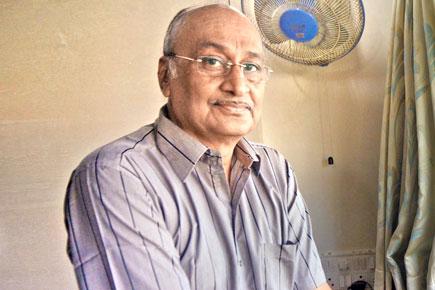
Dr Manav Shyam
Dr Jayant Balaji Athavale was a brilliant doctor, says rationalist Shyam Manav, president of the All Indian Andhshradha Nirmulan Samiti (ANS), in the same breath that he says that Athavale used the Ericksonian hypnosis technique as a tool to successfully influence and control the minds of Sanatan sadhaks.
Also read: This is an international conspiracy: Sanatan Sanstha spokesperson
ADVERTISEMENT
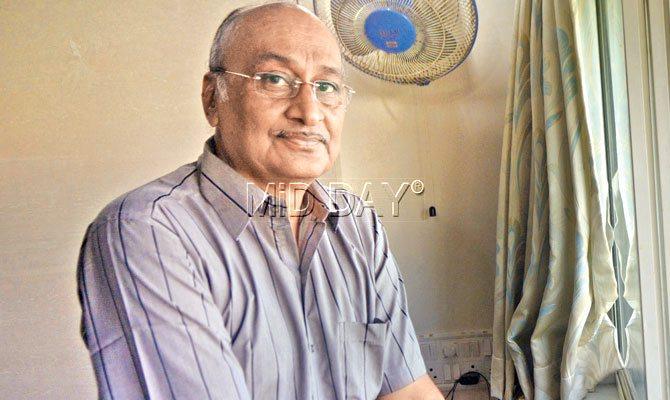
Shyam Manav, former student of Sanatan Sanstha founder Dr JB Athavale, says he began distancing himself from his teacher in the 1990s. PIC/Pradeep Dhivar
Ever since the September 16 arrest of Sameer Gaikwad, a 32-year-old sadhak at the Goa-headquartered Sanatan Bharatiya Sanskruti Sanstha, in relation with the February murder of Kolhapur-based rationalist and CPI leader Govind Pansare, attention has been focused on the Sanstha, which was founded in the early 1990s. Its allegedly cult-like structure and anti-national activities are in the limelight, even as a political battle continues on whether the Sanstha should be declared a terrorist organisation and banned. It has been, at various times in the past 10 years, accused of attacking rationalists, either physically or through its paper, Sanatan Prabhat; planting bombs at a Navi Mumbai cinema where Jodha Akbar was being screened and at a Thane theatre where controversial play Amhi Panchpute was being staged; and causing a blast at Margao (Goa) in 2009, the day before Diwali. The once “fringe” organisation is now the focal point of a national debate on militant Hindutva organisations.
Interestingly, Athavale, whose ideologies continue to form the core of the Sanstha, has been missing from the public eye for over seven years. “He is unwell. Even I haven’t met him for one-and-a-half years,” says 40-year-old Abhay Vartak, a science graduate from Pune, who joined the Sanstha in 1996 and rose through the ranks to become its spokesperson.
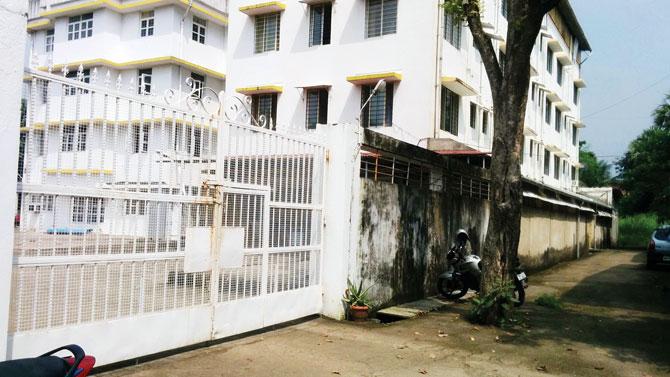
The Panvel ashram of Sanatan Sanstha
Like Vartak, Manav too, started out as a young admirer of Athavale’s skills. The 64-year-old, who now divides his time between Mumbai and Pune, is a hypnotherapist and conducts workshops for the general public. In fact, he learnt the trade from Athavale, who returned to India with his wife in the late 1970s after a stint in London where he trained in Ericksonian hypnosis — a technique founded by Milton H Erickson, an American psychiatrist. Because Athavale would practice hypnotherapy for treating patients, Manav would often refer patients to him. However, by the 1990s, those he referred would return to him upset. “They’d tell me that he had advised them to please their kul devta (family deity) if they wished to rid themselves of health niggles. They would ask me why I, a rationalist/anti-superstition activist, had sent them to someone like him.” These responses, says Manav, were the first signs of the change in Athavale. Gradually, he distanced himself from his former teacher. “I was friends with him…We’d discuss religion and spirituality at length, but he seemed to believe more in divine powers than physical and psychological medicine,” he says, adding, “Once, after I had challenged and exposed several babas by using scientific methods, I visited Dr Athavale. He meditated for a while and told me that I held a grudge against a certain community because of negative energies that were transferred to me from my earlier life.”
Also read: 'Pansare murder accused wanted to take holy dip to repent for sins'
Manav says he was shocked when Arun Chaphekar, a magician, told him that Athavale would mesmerize people with chamatkars (divine tricks). “Chaphekar told me that Dr Athavale could vibrate a clock placed on a table. Incidentally, such clocks were available at a high price at shops that deal with magic equipment.”
Speaking of Athavale’s brand of hypnotism and speculations that he had used them to control sadhaks, Manav says, “People who are subjected to amnesia do not remember what they have done. This may be the reason that the police find it difficult to seek confessions from the suspects affiliated with the Sanstha. The sadhaks, when confronted, talk only of their dream of creating a divine world (or Hindu Rashtra).”

Dr Athavale illustration /Uday Mohite
Interestingly, Erickson himself is said to have believed that his role was to actively change patients — to use hypnosis and post-hypnotic amnesia to help them restructure their thinking.
A psychological evaluation test conducted by the CBI on Gaikwad last week revealed that he was deceptive and misleading investigators by providing false information.
This is “double-speak” says Vikram Bhave, the sadhak who was in jail for nearly five years in association with the 2008 Thane blast. Currently out on bail, the 34-year-old Std X dropout, meets us at the Fort office of his lawyer, advocate Sanjiv Punalekar. “On one hand rationalists claim that it’s superstitious talk to say that forces and energies control people, and on the other hand, they accuse us of indulging in what they claim doesn’t exist.”
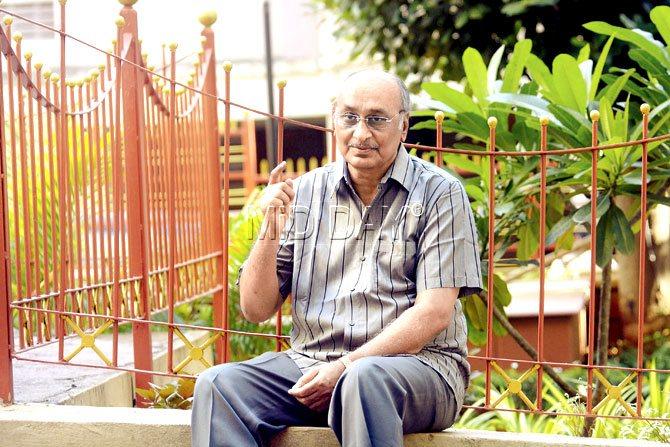
Manav Shyam says Arun Chaphekar, a magician, told him that Athavale could vibrate a clock placed on the table. “Incidentally, such clocks were available at very high costs at shops that deal with magic equipment,” says Manav. PIC/Pradeep Dhivar
Vartak rubbishes claims of mass hypnosis, saying it’s only self-hypnosis or “self-instruction”. Sadhaks are instructed in doing the “nam jap” (where they meditate on the name of their kul devta/devi) till the point that they reach a state of permanent calm.
For any suggestive hypnosis to work, says Paulomi Pandit, a trainer with the Mumbai-based Institute of Clinical Hypnosis And Related Sciences, the person who has to be hypnotised has to be willing. Pandit, who is offering an independent opinion (in that she is not affiliated either with the Sanstha or any rationalist), does, however, add, “There are ways in which the filter of a person, who has to be hypnotised, can been broken. In a meditative/relaxed state, whatever is suggested, even once, can remain with the person forever.”
The Kamble connect
When he meets us at his Bhandup East residence, 25-year-old Malhar Kamble agrees to talk. He even lets us photograph his home and building, but would rather not pose for pictures himself. “Ever since the Sangli cops arrested Jyoti, the building’s residents and our landlord have become scared. But I told them that Jyoti is not involved and that the police are just trying to work towards shutting down the Sanstha,” he says.
On September 16, police officials from Sangli district of Maharashtra, who are investigating the Pansare murder, landed at the Kamble’s residence to detain Jyoti, a graphic designer. Investigations, they revealed, had shown that immediately after Pansare’s killing, Gaikwad had had a conversation with Jyoti in which he had “jokingly said that he had killed Pansare”. The police, of course, believed that it was a serious statement.
“But what has my sister done to be detained?” asks Malhar, adding that he was at work when the police arrived and picked up Jyoti on the pretext of investigation. “However, since then, I have not seen her, nor have I heard from her. All the updates we get are from news portals.”
Malhar denies any suggestion of a relationship between Jyoti and Gaikwad as suggested in some media. “They would talk often, yes. But, it was only related to Sanstha work. Whenever any ritual took place in the city, Gaikwad would call up my sister to help organise it.”
The Kambles’ association with the Sanstha started in 1999 when Malhar and Jyoti’s father was told by doctors that he wouldn’t survive the cancer he was battling. “Through friends and family we came to know about the Sanstha. We took our father there and he was cured.” The recovery made permanent believers of the Kambles.
The violence debate
Vartak’s beatific smile remains in place through a rushed 30-minute meeting at this paper’s office last Thursday evening. He says he thought we were meeting for chai, not an official interview. But, he is, nevertheless prepared for all we throw at him. Even why Gaikawad — whose police custody was on Saturday extended by two days by the Kolhapur Magistrate Court — has an army of 31 lawyers to back his case. “We provided just one lawyer, our official one. The rest have volunteered their services,”
he says.

Sanatan Sanstha member Vikram Bhave (left), who was convicted in the 2008 Gadkari Rangayatan auditorium blast in Thane, is currently out on bail. He is seen here with his advocate Sanjeev Punalekar. PIC/Suresh KK
Gaikwad, who holds a diploma in electrical engineering, is a resident of Sangli and runs cellphone shops in Mumbai and Sangli — this, the Sanstha argues, is why it should not be surprising that he was carrying two mobile phones at the time of his arrest and why police later recovered over 20 mobile handset and 51 SIM cards from his residence. Gaikwad, who is unmarried, has been a sadhak at the Sanstha since 1998.
But, sadhaks argues, there’s little evidence to connect him with Pansare’s murder.
“Yes, we were against the ideologies of Pansare and Dabholkar,” says Vartak, who joined the Sanstha in 1996 (his wife and parents are also followers), “but that doesn’t mean we have murdered them. We protested against them through RTIs and defamation cases; why would we take the violent route?”
Accusations of violence, however, are many. While the Pansare family says the rationalist received several threats — one, post the murder of Dabholkar, threatened him with similar consequences — they don’t name the Sanstha or its affiliates.
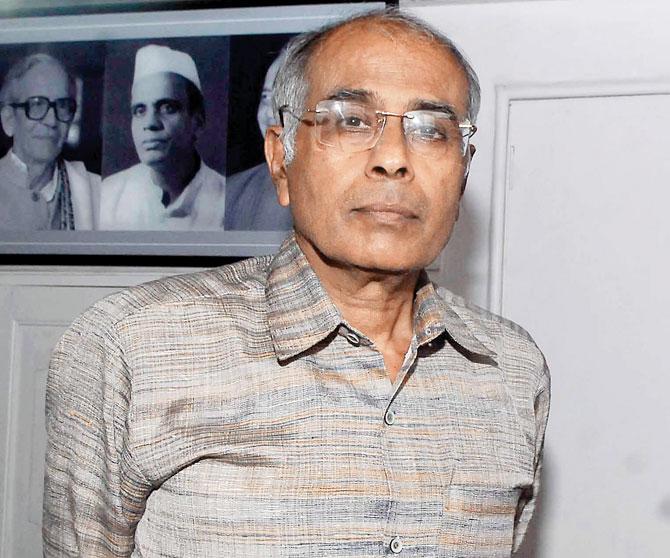
It is suspected that the Sanstha may also be linked to the 2013 murder of Pune resident and rationalist Dr Narendra Dabholkar, who was killed while on a morning walk
Manav, meanwhile, says he’s been on the receiving end of their attacks, ever since he began opposing their practices and supported the Maharashtra Prevention and Eradication of Human Sacrifice and other Inhuman, Evil and Aghori Practices and Black Magic Act, 2013. In 2006, while talking at Pune’s Bal Gandharva Natyamandir, he says, “Suddenly, a person came up to me on stage, and, before I could sense what was happening, he choked me with a powerful clutch. One of my feisty colleagues rescued me that fateful day.” Manav, says he was declared a ‘shaitan’, who warranted destruction for the sake of dharma. “Their modus operandi involves building up pressure on organisers to stall my lectures, write against me and my organisers, and report us to the police on the pretext that we are creating a law and order problem in the name of religion, following which the police would direct us to cancel lectures,” he says, adding that similar methods were used
in the case of Dabholkar and Pansare too.
A relative of Dabholkar says that soon after his murder, Sanatan Prabhat, the Sanstha’s mouthpiece, carried an opinion piece by Athavale, which said that Dr Dabholkar got a good death. “It was far better than dying with any disease lying on bed (sic) at this age”.
The insider’s take
The core ideology of the Sanstha — that a Hindu rashtra should be established in India, with Bhagvad Gita as the constitution — believe most is at the heart of its conflict with everyone else. And also why it needs to be deemed a terrorist organisation and banned.
Delhi-based investigative journalist Rana Ayyub, who in 2009, entered the Goa HQ of the Sanstha, staying there for five hours on the pretext of wanting to join it because she was disillusioned by western culture, says, “Among the many categories of people it listed as the enemies of their objectives, prime were Hindus who did not believe in Sanatan Dharma. For instance, rationalists.” While there, Ayyub says, she also saw former Miss India Sharon Clarke. “However, when I wanted to talk to her, they said she wouldn’t speak. Even the children I wanted to speak to would not speak unless a senior sadhak was around; they’d then reply in a mere yes or no.” Ayyub says everyone she saw on the ground floor — she wasn’t allowed anywhere else — seemed to be in a state of trance.
Also read: I am not worried for my life, threats are not new to me, says senior journalist Nikhil Wagle
In 2011, four individuals together filed a PIL in the Bombay High Court, making similar allegations against the Sanstha. Of these, three were parents who alleged that their daughters, all in their 20s, had one day “disappeared”. Investigations revealed that they had walked into the Panvel ashram of the Sanstha. The Sanstha, they said, didn’t allow them to meet anyone. A rejoinder to the PIL said that the daughters had met the parents at a police station, later, stating that they were adults and had chosen to stay with the Sanstha. The parents, however, argued that during this meeting, other officials of the Sanstha were around them and that the meeting and their statements didn’t reflect free will.
Vartak rubbishes the allegation. “People are free to walk in and out. How can you force someone to stay with you?”
Mystery shrouds the Sanstha. Especially now, since outsiders, i.e. the press, isn’t allowed past the gates. But, Bhave says a typical day within is spent in sadhana.
Originally from Pen, where his father practices ayurvedic medicine, Bhave has been religious since childhood. “At the Sanstha, we start our day at 6 am with exercise. At 9 am, we have a meeting with the respective department we work for. I was with the audio-visual department. We used to work till night and then after 8 pm, we carry on with community work, like cleaning of toilets. We mostly spent our time in sadhana,” said Bhave.
Ask him if he can make a bomb, considering the 2006 conviction, and he laughs, “Till date, I have only held an air gun. Apart from that, I know nothing about arms and ammunition.”
Politicking over faith
The political debate around the Sanstha is as varied as it is complex. For instance, Raghunath Kamble, General Secretary of Communist Party of India’s Kolhapur unit, says Gaikwad’s arrest by the Sangli police came due to pressure from Karnataka investigations.
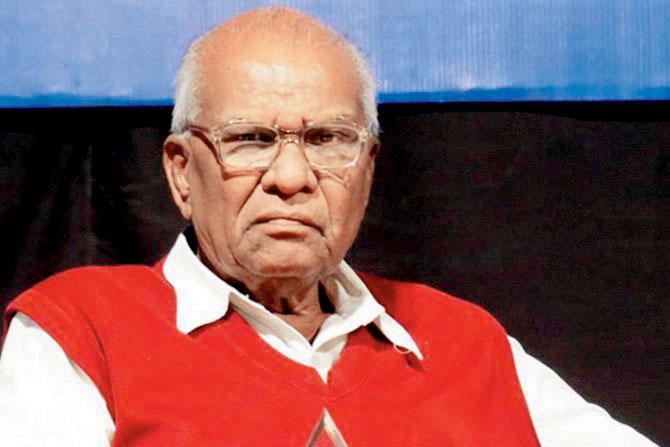
Govind Pansare, rationalist and CPI leader, who was killed on February 16, 2015, while on a morning walk in Kolhapur where he lived
The Karnataka police, he says, were close to arresting Gaikwad in the investigation of the murder of rationalist, Professor M M Kalburgi, in August.
Speaking to SUNDAY mid-day, Kamble says, “The day Pansare was killed, the Sanatan Sanstha office in Kolhapur’s, Shahu Puri, Fourth Lane, was immediately shifted in the middle of the night. They shut the office and fled, taking out everything from there. Even then, the police took much time to arrest the accused because there was a lot of pressure from the ruling BJP government. Now that Karnataka state police, ruled by the Congress, was close to arresting Gaikwad, the police immediately picked him up so that he did not spill anything more to Karnataka police.” Gaikwad, claims Kamble, is getting VIP treatment in the lock-up.
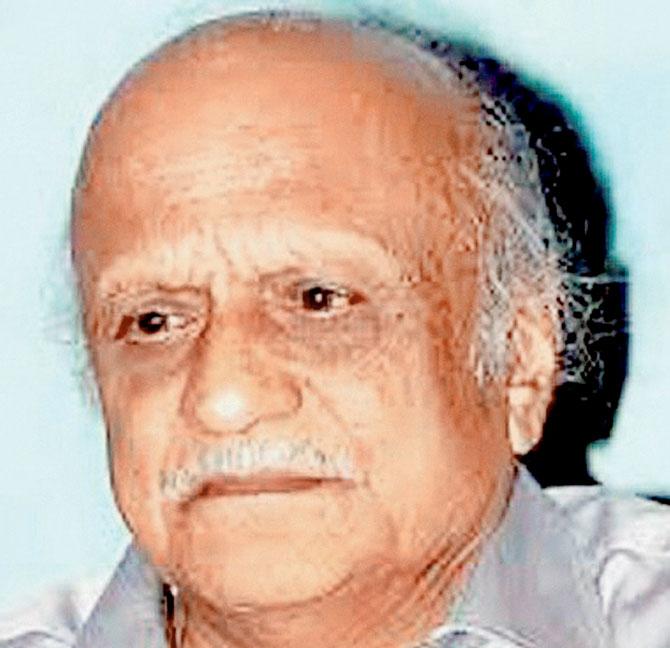
Raghunath Kamble, General Secretary of CPI’s Kolhapur unit, says Gaikwad’s arrest by the Sangli police came due to pressure from Karnataka investigations
Back in Goa, the political voice that staunchly opposes any ban on the Sanstha, comes from an MLA of the Maharashtrawadi Gomantak Party, Ramakrishna Dhavalikar.
Dhavalikar, represents the Madkai constituency, in which the village of Ramnathi and the ashram of Sanatan Sanstha fall. At the time of the Margao blasts, Dhavalikar’s party was a partner in a coalition government with the Congress and he was transport minister. There have been allegations that the then chief minister Digambar Kamat sabotaged an inquiry into the bomb blasts due to pressure from Dhavlikar.
Dhavalikar is now PWD Minister in a coalition government led by the BJP. His brother Deepak Dhavlikar, who represents the neighbouring constituency of Priol in Goa’s Hindu heartland, is also a minister. Both ministers and their families are involved with various religious organisations in Ponda taluka area, and their wives are said to be ‘sadhaks’ with the Sanstha. “We always help our Hindu ‘dharma’ and culture,” says Dhavalikar, who hit the headlines last year after he spoke against bikinis, mini skirts and the pub culture in Goa. “We have seen that they [Sanstha] are helping promote culture and that is the reason we are associated with them, just to have a good working relationship with them.”
He defends the release of government advertisements to the Sanstha’s publications. “There are some events like pujas, for which they come to seek advertisement from the government and as per natural justice, just like for other magazines, we give them some advertisements.”
He hits a discordant note with fellow MLA, Vishnu Surya Wagh, who has demanded a ban on the Sanstha following the Pansare murder allegations. “When the Sri Ram Sena has been banned by the state government for its activities outside the state, there is every reason to ban the Sanstha as its headquarter is in Goa and its activities are now well known,” he tells SUNDAY mid-day. However, for now, the Goa government has said that a move to ban the organisation would be premature.
The Maharashtra government seems to agree. Minister of State (home), Ram Shinde says, “Let’s wait for the outcome of a criminal inquiry. Let’s see what this probe leads us to. We cannot do anything at this stage without any clinching evidence against the organisation in question.”
It’s a legal standpoint that Punalekar would be happy with.
“The people who are asking for a ban on the Sanstha aren’t legally literate. A ban can be put only if the Sanstha is waging a war against the nation, which we aren’t. The rationals were defaming Hindu religion and hence, we were against them. We didn’t kill anyone; we never threatened [journalist Nikhil] Waghle. Why should we be banned?”
— With inputs from Vinay Dalvi, Chaitarly Deshmukh, Joseph Zuzarte and Gitanjali Chandrasekharan
 Subscribe today by clicking the link and stay updated with the latest news!" Click here!
Subscribe today by clicking the link and stay updated with the latest news!" Click here!







